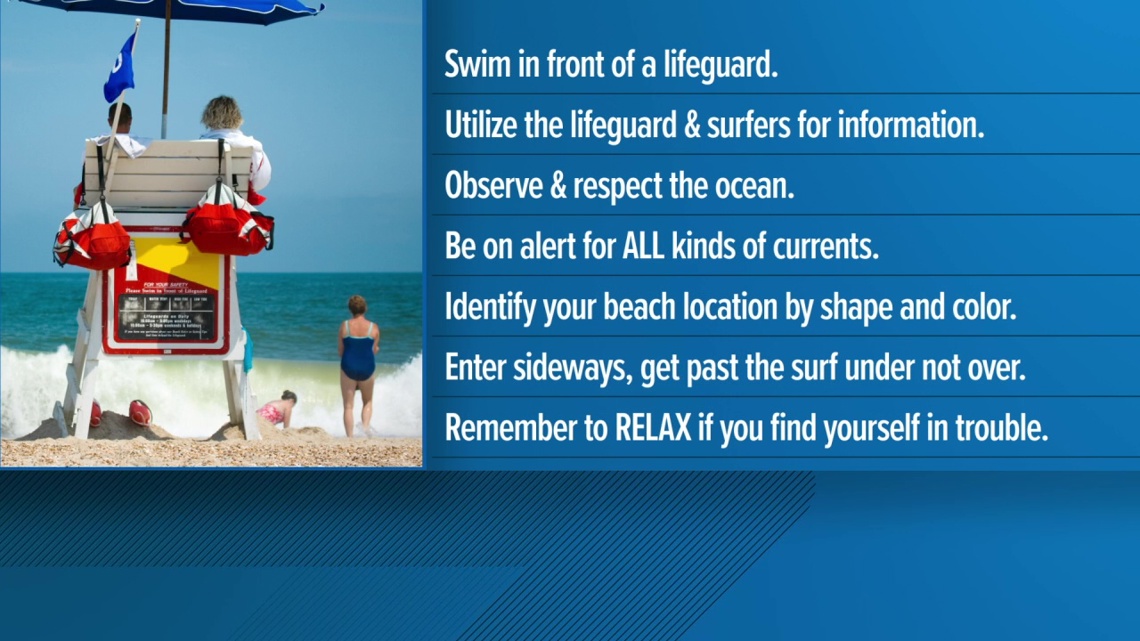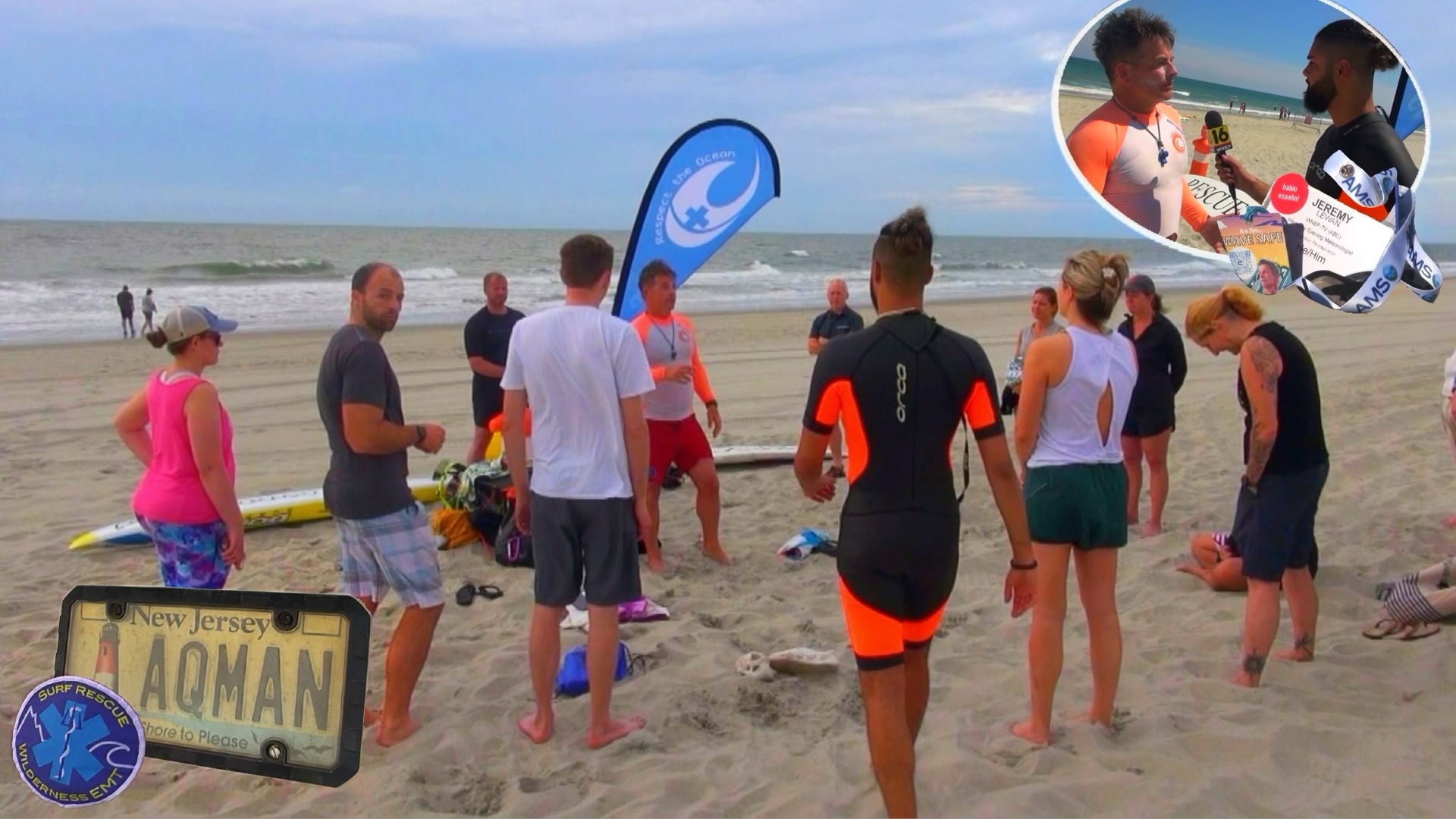MYRTLE BEACH, S.C. — Meteorologists from around the country gathered last week at the 51st Annual Conference on Broadcast Meteorology hosted by the American Meteorological Society in Myrtle Beach, South Carolina. An additional element of the seminar included a course called "Blue IQ," taught by ocean and coastal safety expert Bruckner Chase.
"I've worked with NOAA, the Weather Channel, American Meteorological Society on anything coastal safety, science, and conservation," Chase said.
Chase wasn't always an expert swimmer.
"I grew up in Memphis, Tennessee, a long way away from any ocean. I grew up kind of afraid of the ocean because, at the age of 10, I had been rescued from drowning twice."
As a result, he has made it his mission to conquer his fears and help others avoid experiences like he had at a young age by teaching how to raise your "Blue IQ," or your knowledge of what's going on at the beach.
"If you know how to swim because you learned how to swim in a pool, and now you're in an ocean like you saw today, with 20-mile-per-hour winds and three-foot surf, that swimming experience that you had in the pool is not going to translate," Chase said. "It's really easy to get into situations that are literally and figuratively above your head."
Chase has a list of rules to follow for ocean swimming.
Swim in front of a lifeguard.
"Ideally, you should be swimming in front of a lifeguard," Chase advises.
Utilize the lifeguard and surfers for information.
Chase suggests you talk to that lifeguard or a surfer to gain insights on beach conditions, since every coastline is different.
"The best resource for local information is to walk up to that lifeguard and go, 'What do I need to know about what's going on right here?'"
Observe and respect the ocean.
Check online for coastal warnings issued by the National Weather Service and keep an eye on the forecast for brewing storms.
"If you're having a hard time even seeing a buoy or a marker out in the water, or if you see white caps on the water, that means it's really pretty churned up."
Be on alert for all kinds of currents.
Did you know that a rip tide is not a rip current?
"A rip tide is not really an oceanographic phenomenon. Now, you may have rip currents, which we talked about, and by definition, those are moving from the beach out into the ocean, so away from shore. But you can also have tidal currents, say, at an inlet where there's a large outflow or inflow of water."
It is especially important to avoid inlets, which often have strong and dangerous currents.
"The ideal thing is to always swim perpendicular to a current, so you're not fighting the current."
Some tell-tale signs of rip currents are discolorations in the water or areas where waves aren't seeming to break.
"A long beach current, or a cross-beach current, is something that moves parallel to the shore," Chase said. "Whereas a rip current is moving perpendicular out to sea."
Identify your beach location by shape and color.
Because of this long beach current, you will often find yourself moving laterally along the shoreline as you swim. As a result, when you decide to go in, don't try to find your beach umbrella or towel among the hundreds of others from the ocean. Orient yourself using large landmarks, easily identifiable from a distance.
Enter sideways and get past the surf under, not over.
Bruckner teaches that entering the ocean sideways increases stability in the sand and the ability to break the waves' energy more effectively. Once about waist deep, it's best to get out beyond the surf by diving under the waves, not over them. It's always calm underneath the waves.
Remember to relax.
"If you're in trouble, the number one thing you want to do is relax. Try to signal to someone on shore. The time that you can stay calm and stay afloat—it gives professional rescuers or EMS support time to come to you," Chase said. "You can reduce the risk...if you go aware, and you recognize conditions and also recognize when it might be time to spend that day on the sand."
RELATED: Pennsylvania couple dies after drowning in rip current while vacationing with 6 children in Florida



